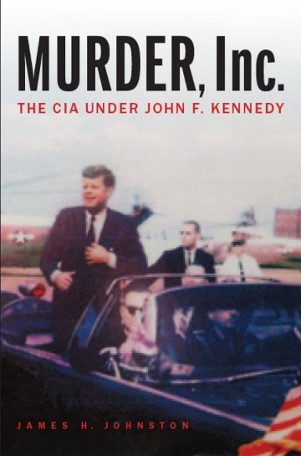Friday, January 13, 2023
Newly Released Files Part 4, The CIA in Mexico City
Friday, January 6, 2023
The Newly Released Files, Part 3, Asciate ogni speranza, o voi ch'intrate
The Italian words chosen for the title of this post, “abandon hope all ye who enter,” come obviously from Dante’s Inferno which has the words inscribed over the gates of hell. They could just as easily be used for the JFK Collection at the National Archives though. This is not to diminish the tremendous efforts of the Assassination Records Review Board (ARRB), which oversaw assembly of the collection, the employees of the government agencies that did the work, or those at the National Archives who maintain them. Yet for those who dive in thinking a smoking gun lurks in the records, asciate ogni speranza, o voi ch'intrate!
1. 40,000 unindexed FBI records. In December 1977, during the House Assassinations Committee investigation, CIA headquarters answered the Mexico City Station's request for copies of FBI documents related to the assassination work in Mexico City because "FBI does not have the personnel to examine first 40,000 pages.... These documents are not indexed.... There no way to determine which documents relate to Mexico City except by search of each individual document." The CIA sent three people to the FBI to do the work, but apparently after the first day of work, they got through only ten of the 200 "sections" of documents at the FBI. (See pages 184-85 of Murder, Inc. on the chaotic filing system for Hoover's feared FBI files).
The researcher may find some comfort in the fact that the ARRB insured that the JFK Collection was indexed -- although hundreds of boxes of possibly related documents are not.
2. The CIA is not a monolith. It is often of two minds, but just as often it is careful as to which mind it makes public. For example, when Cubela's case officer, Nestor Sanchez, testified before the Church Committee in 1976, I asked him about Castro's September 7, 1963, threat that U.S. leaders would not be safe if they aided plans to eliminate Cuban leaders. This threat was made to an American reporter at a function at the Brazilian embassy in Havana. That very day, Sanchez met in Porto Alegre, Brazil, with Rolando Cubela who told Sanchez he wanted the CIA’s help in "eliminating" Castro.
Q. Castro does give a warning about United States leaders aiding terrorist plans to eliminate Cuba leaders, and you were doing that very thing.
A. There is probably a coincidence there. I don't recall that I knew of this at that time [even though the coincidence suggests that Castro knew what Sanchez was doing], I've certainly heard it since, but I don't see the point that you are trying to make, because if Castro is behind or was behind AMLASH [Cubela], then are you proposing that he would also publicly in the Brazilian embassy state that this was going to take place? In other words, was he telegraphing this plan that he had?
But while Sanchez was opining on this to the Senate Intelligence Committee, others at the CIA had reached the opposite conclusion. In a 1975 memo to Rockefeller Commission director David Belin, the CIA's E. Henry Knoche, wrote: "There can be no question... that this event represented a more-than-ordinary attempt to get a message on the record in the United States.... Castro's statements.... dealt principally with American political leadership, in particular President Kennedy, whom he excoriated in an extraordinarily provocative fashion... ('Kennedy is a 'cretin')."
Of course, Knoche's views were not new. When an interagency committee on Cuban affairs studied Castro's statement in the fall of 1963, before Kennedy's assassination, it concluded that Castro was threatening drastic action and might, among other things, assassinate an American businessman or diplomat in Latin America. It apparently didn't consider that he might do exactly what he said and assassinate the President. (Murder, Inc. pages 108-09).
